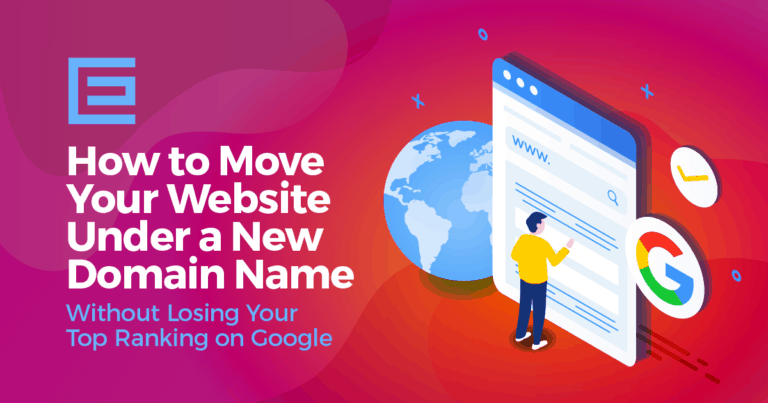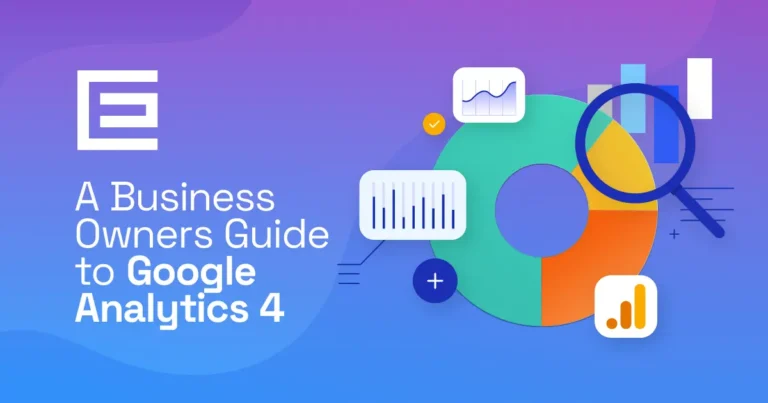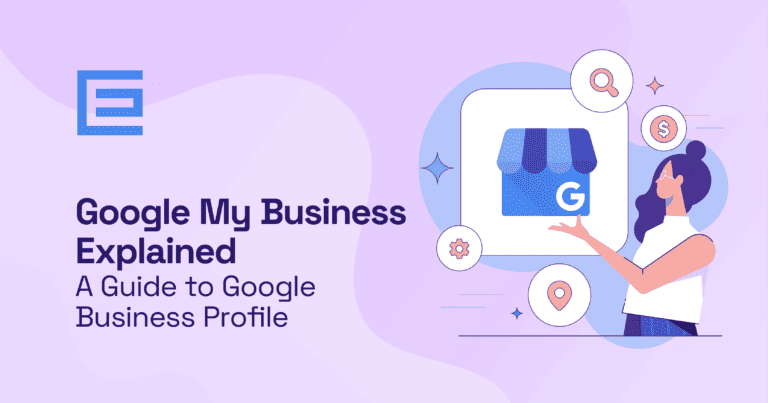What Is A Lead Generation Website?
A lead generation website is a type of website designed to attract visitors and capture their contact information, sometimes in exchange for valuable content or offers. The primary goal of creating the best lead generation website for online lead generation is to convert visitors into leads, which are potential customers interested in your products or services.
These websites often feature:
- Compelling Content That Builds Trust: High-quality, relevant content that addresses the needs and interests of the target audience while also building trust.
- Lead Capture Website Forms: Forms that visitors can fill out to provide their contact information in exchange for access to content or offers.
- Clear Calls to Action (CTAs): Buttons or links that encourage visitors to take a specific action, such as getting a quote, downloading a guide, signing up for a newsletter, or requesting a consultation.
- Responsive Design: A design that is optimized for various devices, including desktops, tablets, and smartphones.
- SEO Optimization: Implementation of search engine optimization (SEO) strategies to improve visibility in search engine results and attract organic traffic.
- Analytics and Tracking: Tools to monitor and analyze website performance, including visitor behavior and conversion rates, to make informed decisions for optimization.
Overall, the best lead generation website aims to engage visitors, provide them with valuable information, and ultimately convert them into leads that can be further nurtured into customers.
Understanding Your Online Lead Generation Target Audience
Understanding your online lead generation target audience is essential for building the best lead generation website. The most important concepts and benefits regarding this are:
- Audience Understanding: You need to find out what the audience needs, preferences, and behavior are in order to produce an effective web lead generation.
- Tailored Marketing: Knowing your audience allows you to create targeted and personalized marketing messages based on audience insights that resonate with them to attract and convert more leads.
- Improved Conversion Rates: Learn what your audience’s pain points and motivations are to help you create offers that are more likely to convert.
- Audience Research Techniques: Use techniques such as surveys, analytics, and social media listening to understand your audience better.
- Creating Buyer Personas: Develop detailed profiles based on audience research to guide marketing strategies and content creation.
- Enhanced Customer Retention: By understanding what matters most to your audience, you can better meet their needs and build long-term relationships.
Techniques Used In Conducting Audience Research For Your Online Lead Generation Website
Several techniques used in conducting audience research for your online lead generation website include:
- Surveys: Create and distribute surveys to collect feedback and insights directly from your target audience.
- Analytics: Use web analytics tools to gather data on your audience’s behavior, such as website visits, page views, and click-through rates.
- Social Media Listening: Monitor conversations on social media platforms to gain insights into your audience’s interests, preferences, and challenges.
- Competitor Analysis: Study your competitors to understand their target audience and how they are engaging with them.
How to Create Buyer Personas
Creating a buyer persona is an important thing to do before you build the best lead gen website. When creating a buyer persona, there are several steps required:
- Gather Data: Use the information collected from surveys, analytics, and social media listening to identify common characteristics and behaviors among your audience.
- Segment Your Audience: Divide your audience into segments based on demographics, psychographics, and behavior.
- Create Persona Profiles: Develop detailed profiles for each segment, including information such as age, gender, interests, challenges, and goals.
- Use Personas in Marketing: Tailor your marketing campaigns, content, and offers to each persona, ensuring they are relevant and compelling.
Set Clear Goals For Lead Generation On Website
Setting clear goals is crucial for the success of creating the best lead generation on website. When setting goals, make sure to do the following:
- Define Specific Goals: Clearly outline what you want to achieve with your lead generation efforts.
- Make Goals Measurable: Ensure that your goals are quantifiable so you can track progress.
- Align with Business Objectives: Ensure that your goals contribute to your overall business goals.
- Example Goals: Examples include increasing newsletter sign-ups by 20% or generating 100 new leads per month.
- Common Lead Generation Goals: These may include increasing website traffic, improving conversion rates, growing email subscribers, and boosting downloads of lead magnets.
- Track Progress: Regularly monitor your progress towards your goals and adjust your strategies as needed.
Lead Generation Landing Page Best Practices
There are several important things you must do when building a lead generation landing page for a lead generation website. They are choosing the right platform, choosing an effective layout, adding compelling content, implementing lead capture forms, optimizing for SEO, and testing.
Choosing The Right Platform Before You Create The Best Lead Generation Website
When choosing the right platform to use for creating the best lead generation website, it’s essential to consider factors:
- Platform Selection: Choose a platform based on ease of use, customization options, and SEO capabilities for your lead generation website.
- WordPress: Highly customizable and SEO-friendly, but may require technical expertise.
- Wix: Known for its drag-and-drop interface and ease of use, suitable for beginners.
- Squarespace: Offers beautifully designed templates and good SEO capabilities, but with fewer customization options.
- Consideration Factors: Consider your technical skills, design preferences, and SEO needs when selecting a platform to align with your lead generation goals.
Designing an Effective Layout For A Lead Generation Website
Designing an effective layout for your lead generation website is crucial for attracting and converting visitors because it helps facilitate easy navigation and access to information. Some important factors for an effective layout include:- Key Elements: Include clear CTAs, easy navigation, and visually appealing design to engage visitors.
- CTA Prominence: Ensure CTAs are prominent and compelling to encourage action.
- Content Conciseness: Keep content concise and informative to maintain visitor interest.
- User-Friendly Design: Create a design that encourages interaction and enhances user experience.
- Research Industry Examples: Various industries showcase effective lead generation website layouts with different approaches to capturing leads.
Creating Compelling Content That Also Builds Trust For A Lead Gen Website
Creating compelling content is essential for a successful lead generation website. High-quality content not only attracts visitors but also encourages them to engage with your brand and ultimately convert into leads. Here are some important things you should consider for this:
- Content Formats: Various formats such as blog posts, ebooks, infographics, videos, and case studies work well for lead generation.
- Audience Engagement: Engage your audience by addressing interests and pain points, using compelling visuals, and providing actionable information.
- Content Quality: Ensure content is well-researched, relevant, and easy to consume to increase effectiveness in generating leads.
- Add Trust Signals: Some examples include SSL certificates, security badges (e.g., Norton Secured), clear privacy policies, money-back guarantees, and easy contact information.
- Add Social Proof: Social Proof can be client logos and client testimonials.
Implementing The Right Forms In A Lead Capture Website For Web Lead Generation
Implementing the right forms for a lead capture website is crucial for web lead generation because it converts visitors into leads on your website. To maximize effectiveness, follow these best practices for designing lead capture forms:
- Keep it Concise: Ask for only essential information to minimize friction. You really only need 3-4 fields at a maximum including the name, email address, and phone number.
- Clear Instructions: Use clear and compelling language for instructions and form fields to guide users.
- Make Them Conversion Oriented: Provide a good contrast between the form button and background to make the form buttons stand out. It is also important to test different CTAs on the form buttons that contain words such as “free”, “now”, “today”, “get”, etc.
- Minimal Fields: Keep the number of form fields to a minimum to reduce abandonment rates.
- Visibility: Ensure that the form is prominently displayed on your website, preferably above the fold.
- Mobile Optimization: Make sure the form is mobile-friendly and easy to use on smartphones and tablets.
In addition to standard forms, consider using tools like pop-ups and slide-ins strategically to capture leads at optimal times, such as when a visitor is about to exit the site or has engaged with key content. These tools can help increase conversion rates by capturing the attention of visitors and prompting them to take action.
Integrating lead capture forms with your CRM system is essential for seamless lead management and follow-up. By connecting your forms to your CRM, you can automatically capture leads and track their interactions with your lead gen website. This integration enables you to nurture leads more effectively and ensures that no potential leads fall through the cracks. By following these best practices and utilizing the right tools, you can optimize your lead capture efforts and increase conversions on your website.
Optimizing A Lead Generation Website for SEO
SEO is essential for driving organic traffic to your lead generation website, increasing visibility, and attracting potential leads. Here are some SEO Best Practices to keep in mind for this:
- Keyword Research: Use tools to find relevant keywords with high search volume and low competition.
- On-Page Optimization: Optimize title tags, meta descriptions, headers, and content with target keywords.
- High-Quality Content: Create engaging content that addresses audience needs in various formats.
- User Search Intent: Tailor content to provide valuable information based on user search intent.
- Mobile Optimization: Ensure your website is mobile-friendly for better search rankings.
- Link Building: Build quality backlinks from reputable sites to improve visibility.
- Regular Updates: Keep content fresh and up-to-date to maintain relevance.
- Analytics: Utilize analytics tools to track key SEO metrics such as organic traffic, keyword rankings, and conversion rates. Analyze this data to identify trends and areas for improvement, and make adjustments to your SEO strategy accordingly.
Testing and Iterating A Lead Generation Website
A/B testing is crucial for optimizing your lead generation website, allowing you to identify what resonates best with your audience and improve conversion rates. When conducting testing, here are some important things to consider:
- Which Elements to Test: Examples include testing different CTA buttons, form placements, headlines, and colors to see which combinations yield the best results.
- Use Data to Iterate: Analyze data from A/B tests and other metrics to make informed decisions about changes to your website. Use this data to continuously improve and refine your lead generation strategy over time.
Conclusion
In summary, building the best lead generation website for online lead generation requires understanding your audience, setting clear goals, choosing the right platform, designing an effective layout, creating compelling content, implementing lead capture forms, optimizing for SEO, and testing and iterating for continuous improvement. It’s important to remember that lead generation is an ongoing process that requires dedication and effort. With the right strategies and tools, you can attract and convert more leads, ultimately growing your business.
Need Help Building Your Lead Generation Website?
Tags: Web Design








